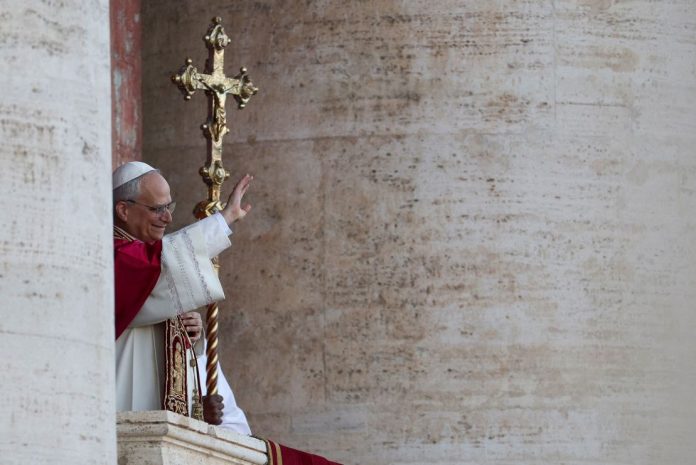Robert Francis Prevost became the first American Pope on Thursday. He was elected the 267th Pope and took the name Leo XIV.
Cardinal Protodeacon Dominic Mamberti announced from the central loggia of St. Peter’s Basilica: “I proclaim to you a great joy: We have a Pope! His Most Eminent and Most Reverend Lord Robert Francis, Cardinal of the Holy Roman Church, who has taken the name Leo XIV.”
On May 8, the conclave in the Vatican came to an end, with the cardinals electing a new pontiff. This was announced by white smoke from the chimney of the Sistine Chapel, symbolising that one of the candidates had received more than two-thirds of the votes and had become the new Pope. The conclave began on the evening of May 7 and lasted just over a day. The Pope was elected on the fourth attempt.
“Peace be with you,” Pope Leo XIV uttered his first words as head of the Roman Catholic Church.
US President Donald Trump congratulated Leo XIV on his election as Pope, calling it a great honour for the country. He said he looked forward to meeting the new pontiff. “It will be a very meaningful moment,” Trump wrote on his social media platform Truth Social.
The former head of the Catholic Church, Francis, died on April 21 from a stroke at the age of 88. He was buried on 26 April. The coffin with the pontiff’s body was placed in a crypt in the Basilica of Santa Maria Maggiore. He had headed the church since 2013.
Voice from Europe
Former Catalan president Carles Puigdemont wrote on X:
“The new Pope Leo XIV will not have a smooth or slight mandate, but he will be able to develop the good work left by Pope Francis. May it be so for many years to come. Congratulations!”
Italian journalist and activist Maurizio Belpietro commented:
“The new Pope is an American who was a missionary in Peru for a long time: Robert F. Prevo. Many Vatican experts who had bet on Parolin or Tsuppi were proven wrong. He chose the name Leo XIV.”
Former Italy’s Prime Minister Giuseppe Conte said:
“A world without weapons, a disarming world, humble and persistent.” These are the first words, clear and courageous, of Pope Leo XIV. They strike with great force in our hearts, in our minds, in the language of our time, increasingly dominated by sad words: weapons, war, death.”
French MEP François-Xavier Bellamy noted:
“At this moment, when violence and division seem to prevail everywhere, the call for peace unites hundreds of millions of minds and hearts today. Thank you, Pope Leo XIV: may his mission be fruitful for this world, which so desperately needs hope.”
Who is Pope Leo XIV?
Robert Francis Prevost was born on September 14, 1955 in Chicago. His father, Louis Marius Prevost, was of French-Italian descent, and his mother, Mildred Martinez, was Spanish. He has two brothers, Louis Martin and John Joseph.
In 1977, he graduated from Villanova University in Pennsylvania, founded by the Order of Saint Augustine, where he studied mathematics and philosophy. In the same year, he entered the novitiate of the Order of Saint Augustine. He then studied theology in Chicago. At the age of 27, he went to Rome to study canon law at the Pontifical University of Saint Thomas Aquinas. He was ordained a priest in Rome in June 1982. From 1985 to 1986, he was on a mission in the city of Chulucanas, Peru. In 1987, he defended his doctoral thesis.
Later, he arrived in Trujillo, Peru, where he held various positions for 11 years. From 2013, he was first counsellor and vicar of the Province of Our Lady of Good Counsel in Chicago, until Pope Francis appointed him apostolic administrator of the Peruvian diocese of Chiclayo and titular bishop of Soufar in November 2014.
In September 2015, he became Bishop of Chiclayo, and in March 2018, he was appointed second vice-president of the Peruvian Episcopal Conference.
In 2019, the Pope included him in the Congregation for the Clergy, and the following year he became a member of the Congregation for Bishops. In 2020, he became apostolic administrator of the Peruvian diocese of Callao.
In September 2023, he was made a cardinal. From then until February this year, he was a cardinal-deacon with the titular diaconate of Santa Monica, and then cardinal-bishop of Albano.
